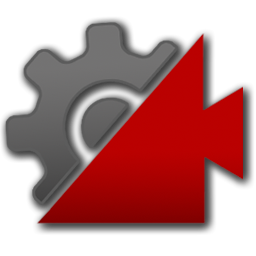Cinemachine
 | CinemachineFramingTransposer Fields |
The CinemachineFramingTransposer type exposes the following members.
 Fields
Fields| Name | Description | |
|---|---|---|
 | m_AdjustmentMode | How to adjust the camera to get the desired framing |
 | m_BiasX | A non-zero bias will move the targt position away from the center of the soft zone |
 | m_BiasY | A non-zero bias will move the targt position away from the center of the soft zone |
 | m_CameraDistance | The distance along the camera axis that will be maintained from the Follow target |
 | m_DeadZoneDepth | The camera will not move along its z-axis if the Follow target is within this distance of the specified camera distance |
 | m_DeadZoneHeight | Camera will not move vertically if the target is within this range of the position |
 | m_DeadZoneWidth | Camera will not move horizontally if the target is within this range of the position |
 | m_GroupFramingMode | What screen dimensions to consider when framing |
 | m_GroupFramingSize | How much of the screen to fill with the bounding box of the targets. |
 | m_LookaheadSmoothing | Controls the smoothness of the lookahead algorithm. Larger values smooth out
jittery predictions and also increase prediction lag |
 | m_LookaheadTime | This setting will instruct the composer to adjust its target offset based
on the motion of the target. The composer will look at a point where it estimates
the target will be this many seconds into the future. Note that this setting is sensitive
to noisy animation, and can amplify the noise, resulting in undesirable camera jitter.
If the camera jitters unacceptably when the target is in motion, turn down this setting,
or animate the target more smoothly. |
 | m_MaxDollyIn | How much closer to the target can the camera go? |
 | m_MaxDollyOut | How much farther from the target can the camera go? |
 | m_MaximumDistance | Set this to limit how far from the taregt the camera can get |
 | m_MaximumFOV | If adjusting FOV, will not set the FOV higher than this |
 | m_MaximumOrthoSize | If adjusting Orthographic Size, will not set it higher than this |
 | m_MinimumDistance | Set this to limit how close to the target the camera can get |
 | m_MinimumFOV | If adjusting FOV, will not set the FOV lower than this |
 | m_MinimumOrthoSize | If adjusting Orthographic Size, will not set it lower than this |
 | m_ScreenX | Horizontal screen position for target. The camera will move to position the tracked object here |
 | m_ScreenY | Vertical screen position for target, The camera will move to to position the tracked object here |
 | m_SoftZoneHeight | When target is within this region, camera will gradually move to re-align
towards the desired position, depending onm the damping speed |
 | m_SoftZoneWidth | When target is within this region, camera will gradually move to re-align
towards the desired position, depending onm the damping speed |
 | m_UnlimitedSoftZone | |
 | m_XDamping | How aggressively the camera tries to maintain the offset in the X-axis.
Small numbers are more responsive, rapidly translating the camera to keep the target's
x-axis offset. Larger numbers give a more heavy slowly responding camera.
Using different settings per axis can yield a wide range of camera behaviors |
 | m_YDamping | How aggressively the camera tries to maintain the offset in the Y-axis.
Small numbers are more responsive, rapidly translating the camera to keep the target's
y-axis offset. Larger numbers give a more heavy slowly responding camera.
Using different settings per axis can yield a wide range of camera behaviors |
 | m_ZDamping | How aggressively the camera tries to maintain the offset in the Z-axis.
Small numbers are more responsive, rapidly translating the camera to keep the
target's z-axis offset. Larger numbers give a more heavy slowly responding camera.
Using different settings per axis can yield a wide range of camera behaviors |
 | OnGUICallback | Used by the Inspector Editor to display on-screen guides. |
 See Also
See Also